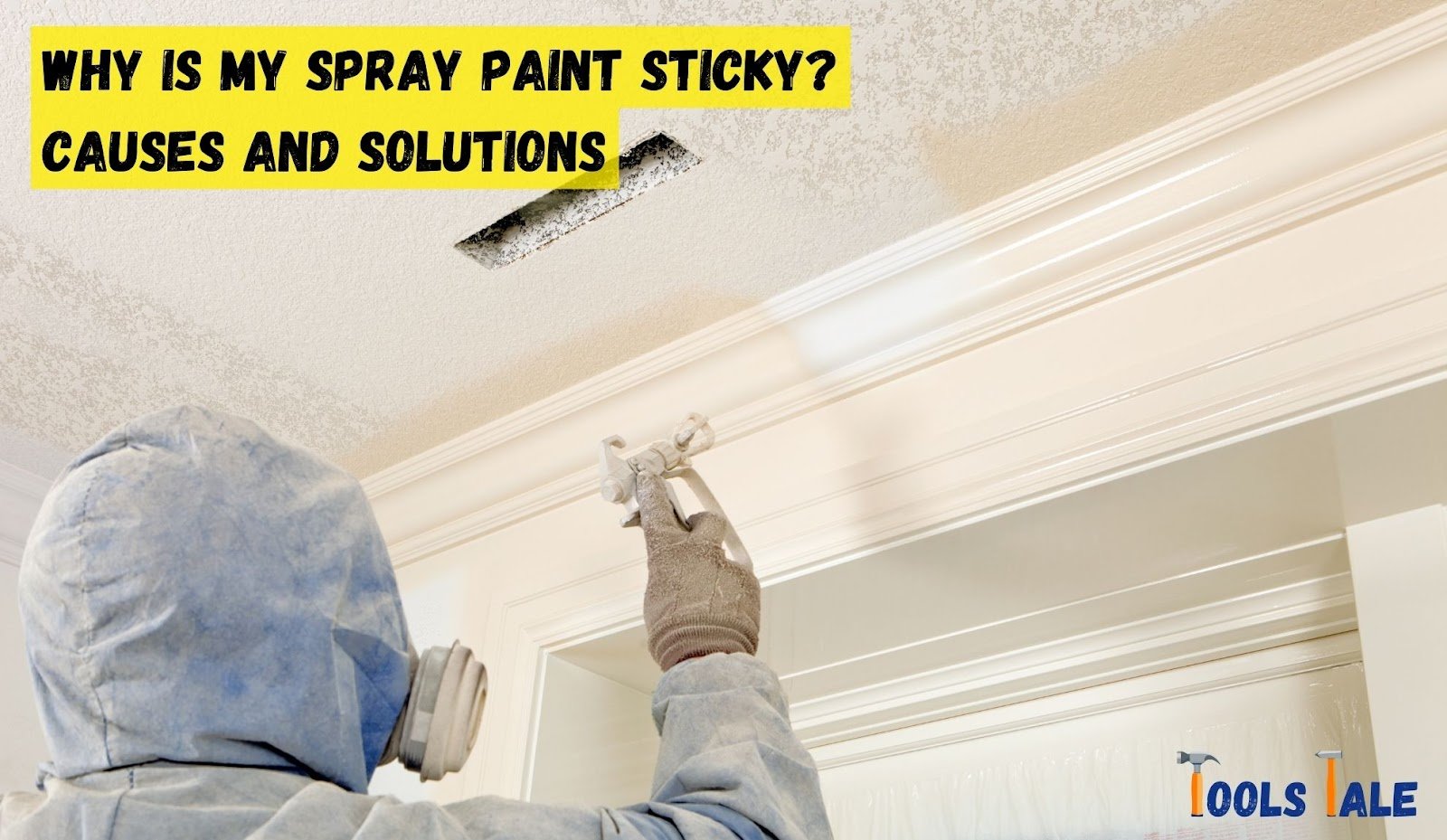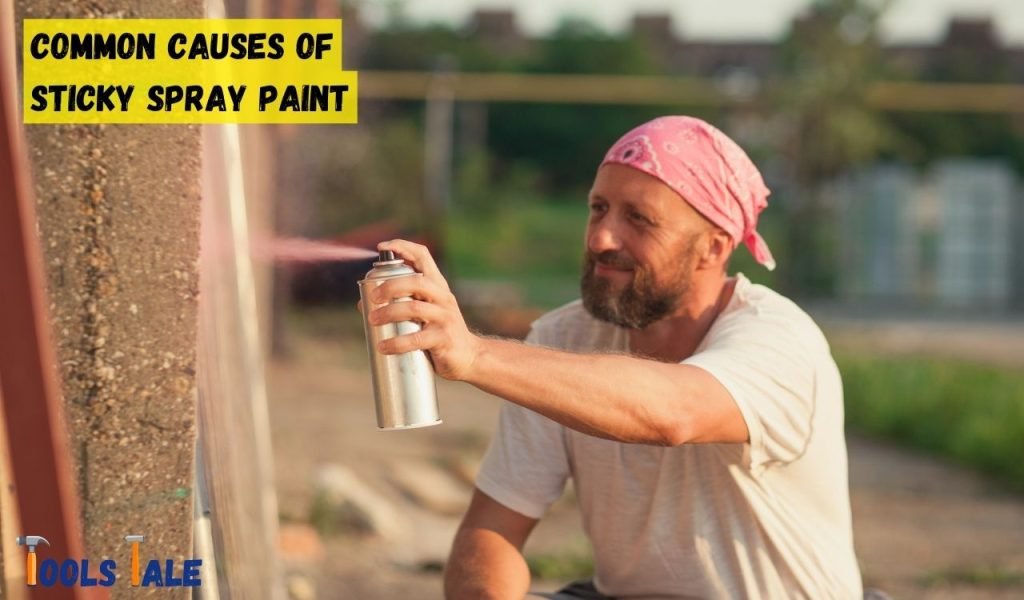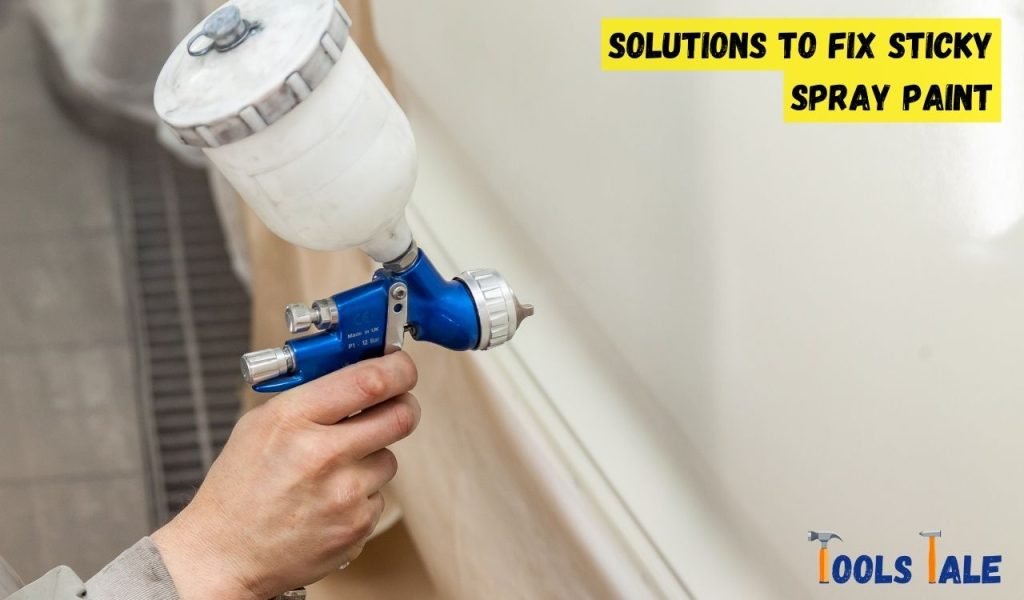Physical Address
304 North Cardinal St.
Dorchester Center, MA 02124
Physical Address
304 North Cardinal St.
Dorchester Center, MA 02124

Why is my spray paint sticky? If you’ve ever found yourself pondering this question after a DIY painting project, you’re not alone. Sticky spray paint can be frustrating, but fear not! In this quick guide, we’re diving straight into the causes and solutions for this common issue.
Whether you’re a seasoned DIY enthusiast or just starting, understanding why your spray paint turned sticky and how to fix it can save you time, money, and a lot of headaches. So, let’s unravel the mystery and get your paint projects back on track!
Key Summary: Why Is My Spray Paint Sticky?
Spray paint can become sticky due to factors like humidity, temperature, improper application, or low-quality paint. To combat stickiness, control environmental conditions, prep surfaces thoroughly, invest in high-quality paint, and meticulously follow application instructions for a smooth, non-sticky finish.
Spray paint can become sticky for various reasons, leading to frustrating and unsightly results. One common cause is humidity. High moisture levels in the air can interfere with the paint’s drying process, making it tacky to the touch. Similarly, low temperatures can slow down the drying time, causing the paint to remain sticky for longer periods.
Improper application techniques are another culprit. If you apply the paint too thickly or in multiple heavy coats, it may not dry properly, resulting in a sticky finish. Additionally, using low-quality or expired spray paint can lead to stickiness as these products often lack the necessary ingredients for a smooth, dry surface.
To prevent sticky spray paint, it’s essential to choose the right environmental conditions, such as a dry and moderately warm day. Properly prepare the surface by cleaning and sanding it, use high-quality spray paint, and follow the manufacturer’s instructions meticulously. These steps will help ensure your spray paint dries smoothly and without any sticky residue.

One of the primary culprits behind sticky spray paint is overspraying. This occurs when you apply an excessive amount of paint in a single pass, overwhelming the surface you’re painting. Here’s a closer look at this common application error:
Maintaining the correct distance between the spray nozzle and the surface is crucial for achieving a smooth finish. Deviating from the optimal distance can result in an uneven application and sticky paint:
Applying excessively thick coats of spray paint can trap solvents within the paint layers, prolonging drying times and increasing the likelihood of stickiness:
The quality of the spray paint you select plays a significant role in the final outcome. Low-quality or expired paints are more likely to result in sticky finishes:
Cheaper paints often contain subpar ingredients that do not adhere well or dry properly:
Using paint that has surpassed its shelf life can lead to numerous issues, including stickiness:
The environment in which you conduct your spray painting project can have a profound impact on the drying process and the potential for sticky spray paint. Let’s delve into the influence of environmental factors, including temperature, humidity, and ventilation, on the outcome of your painting endeavor:
Understanding how these environmental factors influence your spray painting project is crucial for achieving the desired finish. By considering and controlling these factors, you can minimize the risk of encountering sticky spray paint and ensure a successful and professional-looking outcome.

Encountered the frustration of sticky spray paint on your project? Don’t worry; there are effective solutions to salvage your work and achieve the smooth, non-sticky finish you desire. Let’s explore the steps you can take to fix this common issue:
If your spray paint has already dried but remains sticky, you can carefully sand the affected surface to address the stickiness. Here’s how:
Sanding the surface removes the sticky layer and prepares it for recoating.
Once you’ve sanded the surface, it’s time to reapply the paint. However, it’s essential to do so in thin, even coats to ensure a successful finish:
Applying paint in thin coats allows for proper drying and minimizes the risk of stickiness.
If the stickiness persists even after sanding and reapplication, consider switching to a different paint. Opt for a higher-quality spray paint with better drying properties:
High-quality paint is less likely to result in stickiness due to its superior ingredients and formulation.
Pay close attention to the environmental conditions in which you’re painting. Temperature, humidity, and ventilation can all influence the drying process and stickiness:
Proper environmental conditions promote effective drying and reduce the likelihood of stickiness.
Refer to the manufacturer’s instructions on the paint can for specific guidance on addressing sticky paint issues:
Manufacturer guidelines are tailored to the specific paint formulation and can provide valuable insights and solutions.
By implementing these solutions, you can salvage your spray paint project and achieve the smooth, professional finish you intended. Remember that practice and attention to detail are key to avoiding sticky spray paint in the future.
In conclusion, understanding the reasons behind sticky spray paint and how to address this issue is crucial for successful DIY projects. Whether it’s improper application techniques, adverse environmental conditions, or the quality of the paint itself, you now have the knowledge to troubleshoot and resolve sticky paint problems.
Armed with these insights, you can confidently tackle your spray painting projects, achieving the smooth and professional finishes you desire. So, bid farewell to sticky spray paint woes and embrace your newfound expertise in achieving flawless results.
Spray paint can become sticky due to factors like overspraying, improper application, low-quality paint, or adverse environmental conditions. Identifying the specific cause can help address the issue effectively.
Yes, you can prevent sticky spray paint by following proper spraying techniques, using high-quality paint, maintaining the correct spraying distance, and considering environmental factors such as temperature and humidity.
Absolutely, the type of surface matters. Some surfaces may require priming or specific types of paint to ensure proper adhesion and prevent stickiness. Preparing the surface appropriately is essential.
You can often fix sticky spray paint. Lightly sand the surface to remove stickiness, then reapply paint in thin, even coats. If the issue persists, consult manufacturer guidelines or consider using a different paint brand.
If your spray paint is sticky, you can lightly sand the surface to remove stickiness. Then, reapply paint in thin, even coats, following proper application techniques. If the issue persists, consider changing paint brands.
Yes, humidity plays a role. High humidity can slow drying, leading to stickiness. Low humidity can cause rapid drying, also resulting in stickiness. Maintaining optimal humidity levels during painting is important.
While it’s generally recommended to lightly sand sticky paint for better adhesion, you can try applying a primer before repainting to improve surface condition. However, sanding is often more effective.
Yes, expired spray paint can lead to stickiness due to changes in its chemical composition. Always check the paint can for the expiration date before use, and avoid using expired paint for your projects.